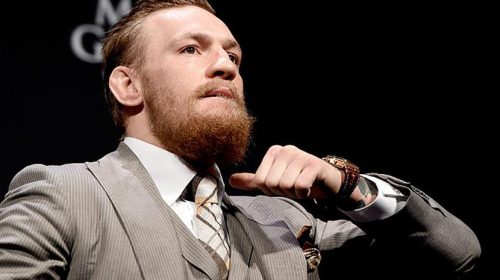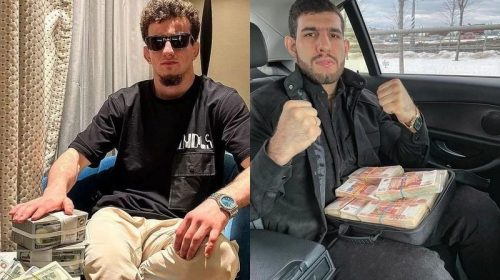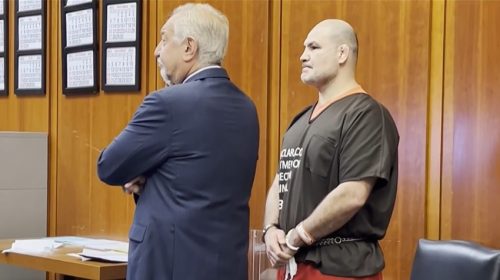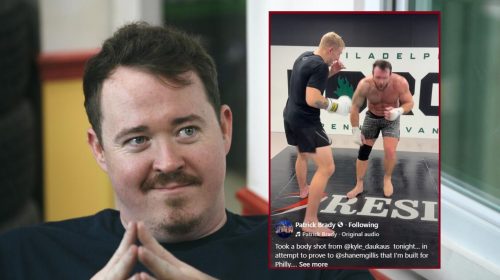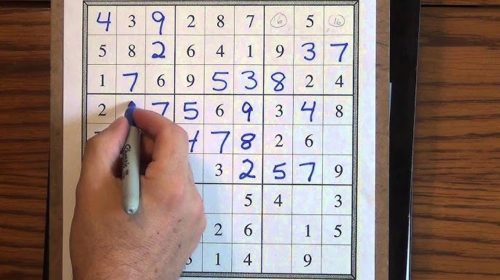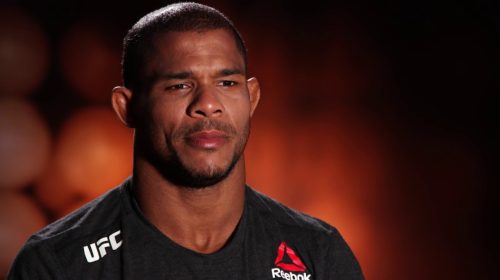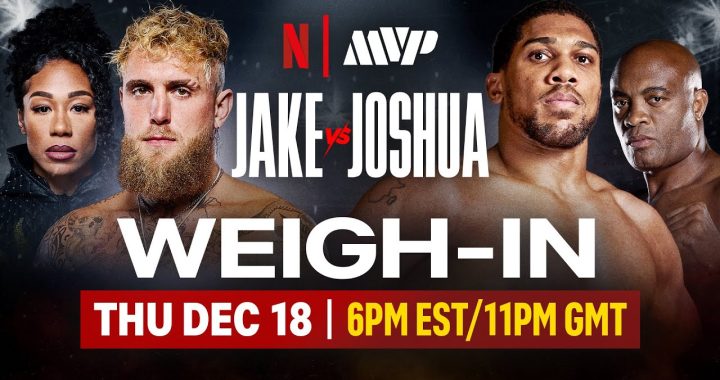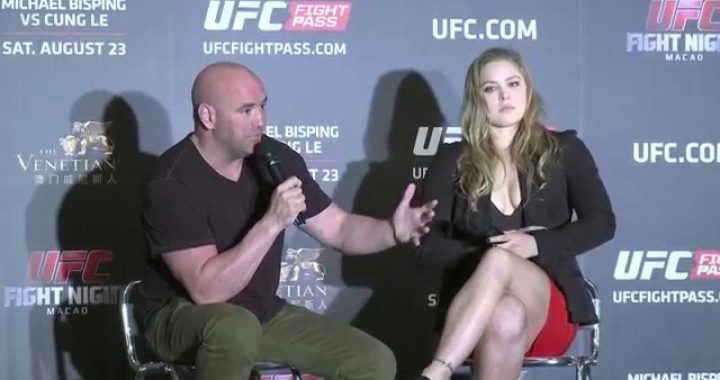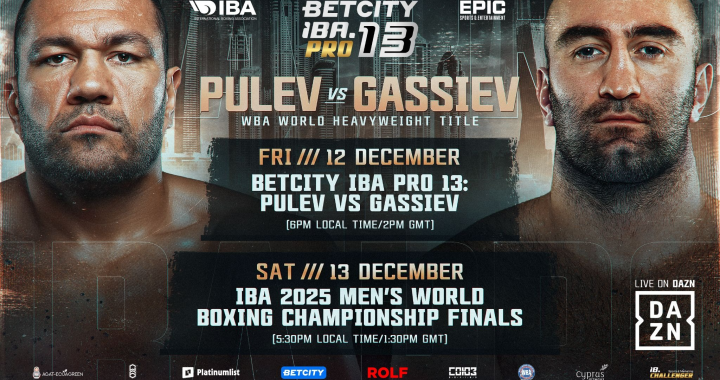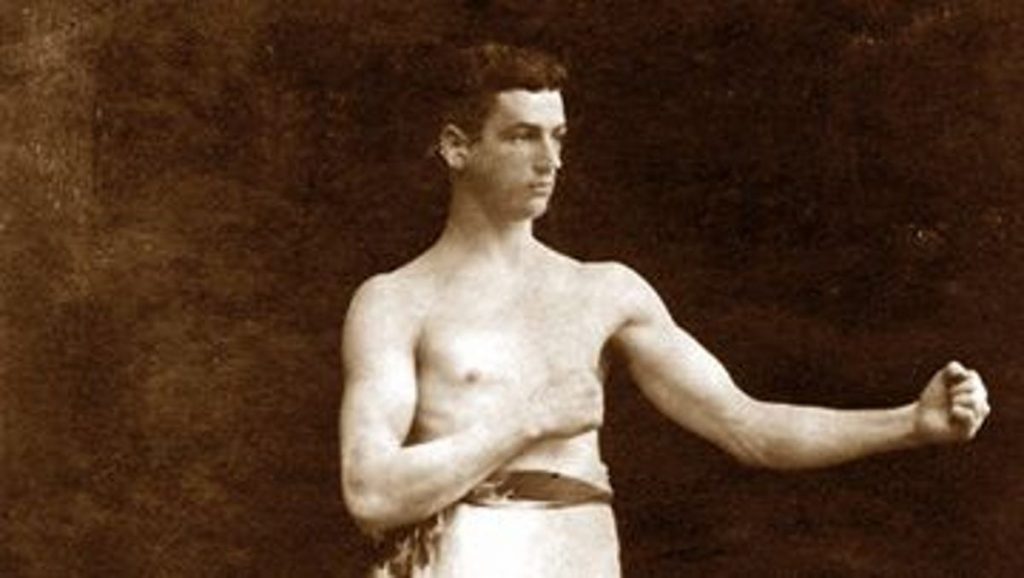
Indiana – The Life and Antics of Kid McCoy
Boxing Across the Nation: Indiana- The Life and Antics of Kid McCoy
Boxing has been apart of the American sports scene since the 1700s by way of England. It started by infiltrating the larger port towns before eventually working its way into the lexicon of America. Now it showcases some of the most talented combat sports athletes in the world. We will embark on a 50 part saga exploring the best boxers representing the United States. Some states will have more athletes to choose from than others but the journey will be quite the ride. Let’s embark on the journey looking at an interesting fighter or bout from each state. Our 14th entry is the state of Indiana.
Check out the 13 states we have covered by clicking below:
Alaska-Hector Camacho vs John Montes Card
Arizona-Hall of Famer Michael Carbajal
Arkansas-The Tragic Story of Sonny Liston
California-The Underappreciated Career of Andre Ward
Colorado-Boxing’s First Mega Star Jack Dempsey
Connecticut-Boxing’s Wins Leader Willie Pep
Delaware-The Night Dave Tiberi Almost Shocked the World
Florida-Pryor vs Arguello Showered In Controversy
Georgia-The Tragic Story of Cleveland “Big Cat” Williams
Hawaii-“The Hawaiian Punch” Brian Viloria
Idaho-The Sad Tale of Ed Sanders
Illinois-“The Drunken Master” Emanuel Augustus
Indiana
Indiana is the 17th-most populated state in the nation and ranks 38th as far as land-mass. The 19th state to join the Union, Indiana is known for its love and passion for basketball. Boxing though has also been apart of the state’s long sports history. There have been greats such as former light heavyweight champion of the world Jack Dillon and former WBO world heavyweight champion Lamon Brewster. None have graced “The Hoosier State” with such skill and antics as Norman Selby, later and better known as Kid McCoy. Charles “Kid” McCoy was an eccentric character even until the day he took his own life.
Early Life
Norman Selby (who would better become known as Kid McCoy) was born on October 13, 1872, in Moscow, Indiana located in Rush County. 45 minutes Southeast of Indianapolis, a 2019 census showed the population of Moscow to be around 19,000 people. McCoy was known as a child to “hop the rails” and travel to Cincinnati. Once there, McCoy would often engage in fights with hobos, always a favorite past-time (and future-time) for the future world champion. Also doing what a typical boy from Indiana does, McCoy also hunted, fished, and rode horses. In 1890, at the age of 18, under his real name, McCoy took his lone bout as Norman Selby in Butte, Montana where he earned five dollars ($142.98 today.) It’s unknown why, but after this bout Kid McCoy was born and the legendary career and turbulent life began.
Kid McCoy is Born
It was commonplace in the early 1900s for fighters to acquire a new moniker. The problem for McCoy, which we will explore, was his inability to turn off his in-ring flamboyant, dirty-style persona when he stepped into the real world. His name, Charles “Kid” McCoy, is believed to have been taken from a burlesque number that featured the antic of cracksafers of Charles McCoy and Spike Hennessey. As was accustomed for boxers of McCoy’s time, and even briefly after, McCoy had 20 fights in his first three years of action. He started out his career in June 1891 and remained undefeated until May 1894. Though McCoy’s in-ring career would only last until he was 40-years old (1912) his out-of-ring career would be just as eventful, if not more-so full of marriages, homicide, and suicide.
Taking His First Loss “On the Chin”
McCoy’s first loss came after an impressive run to start his career of 16-0-3. The date of that loss was May 10, 1894, in which he met a debuting fighter in Billy Steffers. Legend states that McCoy was so cocky of his skills going into the bout that he stood in the middle of the ring and let Steffers get a shot in. The shot was square on the jaw and knocked out McCoy. A newspaper entry from the Star-Gazette in Elmira, New York pretty much backed the claim. The article stated McCoy stepped up in a “creeping style” and lightly threw a punch toward Steffers midsection. Steffers side-stepped and threw a punch that dropped McCoy. McCoy would get his revenge, defeating Steffers two more times in their next two meetings. McCoy battered Steffers, using his “corkscrew punch” to tear up the skin of Steffers’ face.
The Inventor of “The Corkscrew Punch”
It’s very popular in the world of MMA to see strikers use a “corkscrew” twist to their punch when slipping under the guard of a defending opponent. Typically, that is an outward twist of the wrist, but the founder and creator of the corkscrew punch is none other than McCoy himself. He stated after seeing a cat hit a ball. McCoy began to imitate the motion, thus creating a corkscrew punch. So what is the definition of a “corkscrew punch?” The best way to describe a corkscrew punch is a punch delivered with a twist of the wrist at the end. McCoy stated the twist at the end of the punch increased power and aided in cutting his opponent’s face. The padding of gloves were not as nearly as protective as they are today. Just one of the many of antics in the ring by McCoy.
Using One of His Antics to Defeat a World Champion
Never one to shy away from using an antic to gain the upper-hand, McCoy did just that to defeat Tommy Ryan, then-world welterweight champion, on March 02, 1896. McCoy was a training partner for the world champion and not a fan of Ryan’s. It was well-known that Ryan did not take it easy on his sparring partners, often giving them a beating. In order to try and get one up on Ryan, McCoy lost weight to appear very frail and put baking powder on his face to make him look frail and sick.
Seeking the ultimate revenge, McCoy convinced Ryan he was gravely ill but wanted a matchup because he needed the money for medical expenses. Failing to train hard because he was fighting a “sick” sparring partner, McCoy worked harder than before and knocked out Ryan in the 15th round. After a few big wins over veterans like Dick Moore and Jim Daly, McCoy would go on to defeat Bill Doherty for the South African Middleweight title via knockout.
Up to More Antics
Making a name for himself in the boxing world, McCoy took a tour of Australia and the Pacific Islands. It’s said that during the tour he noticed one of his future opponents did not wear shoes. McCoy had his corner at one point throw thumbtacks into the ring causing his opponent to step on them. When grabbing his foot in agony, McCoy would unleash on his opponent, taking the stoppage victory. The opponent was pushing the now-heavyweight limits while McCoy fought around 160lbs. While also competing in “bare” knuckle bouts, McCoy would wrap his hand in friction tape while using his “corkscrew punch” to better rip up the face of his opponent.
It’s also said he once fought a deaf opponent. He pointed his opponent to his corner, though the bell had not rung yet. Once his opponent turned to walk to his corner, McCoy struck him with a knockout blow, dropping his foe. Tommy Ryan once said of his former sparring partner, “The kid has a mean streak running from the top of his curly hair right down to the troublesome ingrown nail on his left toe.”
“The Real McCoy”
The expression “The Real McCoy” has been around for well over 150 years. It’s used to describe something as being, “the real deal.” The origins of the expression are highly debatable, but one of the given reasons for the usage of the expression in the United States comes from Kid McCoy. A couple of stories have circulated over time but one that seems to have stuck comes from McCoy’s bout with light heavyweight future International Hall of Famer Joe Choynski. After McCoy’s defeat of the much bigger fighter in three rounds, many began to call McCoy, “The Real McCoy,” due to his ability to finish such a tough boxer.
Ending One Career to Start Another
On January 20, 1912, at the age of 39, McCoy took to the ring for the last time. He ended his 13th fight winning streak with a victory by points against P.O. Matthew Curran in France. It’s said during the bout McCoy was knocked to the mat and drank a whiskey and soda, which was at ringside. McCoy was able to finish the 20-round bout and take the victory by points.
Acting Career
During his brief time on top of the boxing world, McCoy made friends in high places in the newly budding motion picture world. Two of the biggest names of that time were actor Charlie Chaplin and director D.W. Griffith. Unfortunately for McCoy, he would become addicted to alcohol and only last five years in the movie industry. His first film was the 1918 silent film titled, The House of Glass, where he starred as a detective. His final role came in the “lost film” titled April Showers, in which McCoy played the role of a boxing manager.
10 Marriages Along with a Murder Charge
Brief Background on the Rollercoaster Love-Life
From 1895 to McCoy’s suicide (which we will cover later) in 1940, McCoy was married 10 times to eight different women (three times to the same woman.) McCoy’s longest marriage was six years and that was on his eighth time around. There were also a few lovers along the way who did not marry McCoy. A love affair with the wealthy married Theresa Mors ended in her death at the hands of McCoy.
Manslaughter Conviction in the Death of Theresa Mors
During the time of her murder, Theresa was married to a wealthy antics and art dealer, Albert Mors. McCoy and Theresa shared an apartment together. When questioned about the incident, McCoy stated the two were drinking Scotch and soda on August 12, 1924, together along with eating sandwiches. Theresa asked to have her sandwich cut into pieces, which McCoy did so for her before claiming she took the knife, plunging it deep into her own midsection. McCoy claimed he was able to wrestle the knife away, but Theresa was able to get ahold of his gun. While struggling for the firearm, the gun went off. McCoy said at first he was not sure if it was her or himself that was shot.
Other reports state Sam and Anna Schapps, friends of the Mors who owned a dress shop next door to Albert’s antique shop, told her McCoy was a “bum” and was no good. McCoy allegedly hit her in the face, knocking out teeth, before stabbing and shooting her.
Hostage Situation and More Shooting
In 1997, the Los Angeles Times spoke to Frances Pearlstein Grunnet, who was 92-years-old at the time and the only witness still alive at the time. Frances served as the Mors’ secretary. She stated McCoy came to the shop in search of Albert. When he realized Albert was not there, McCoy took 11 people hostage, shooting one in the leg when he tried to escape. Frances stated after collecting all of the money from the hostages that they had, he gave $300 of if to Frances as a future wedding gift, who was set to marry soon. She also said Albert was not at the shop because he went to get a hair cut then his Cadillac would not start.
McCoy eventually gave up and left the shop, traveling now to the shop of Albert’s friends, Sam and Anna Schapps. McCoy remembered they disapproved of his relationship with Theresa, calling him a, “love pirate.” The Schapps were also the friends who told Theresa that McCoy was a “bum” and no good for her. He entered the Schapps’ shop and shot both before leaving the scene. McCoy was soon thereafter arrested and sentenced. After deliberating for 78 hours, the jury convicted McCoy of manslaughter along with assault with a deadly weapon for the three injured people. In 1933, after nine years, McCoy was paroled from San Quentin Prison.
End Days and Suicide
After raising canaries and teaching inmates how to box during his time in San Quentin, McCoy would eventually become director of the guards (athletic director) and was a gardener for the Ford Company’s 12,000 thrift gardens. Though being awarded a full pardon for the death of Thersa Mors in 1937, McCoy checked into the Hotel Tuller, which stood in downtown Detroit across from the Grand Circus Park, on Thursday, April 18, 1940. Before swallowing a lethal dose of sleeping pills, McCoy wrote a suicide note stating, “For the past eight years I have wanted to help humanity, especially the youngsters, who do not know Nature’s laws. To all my friends I wish you the best of luck. I can no longer endure this world’s madness.”




